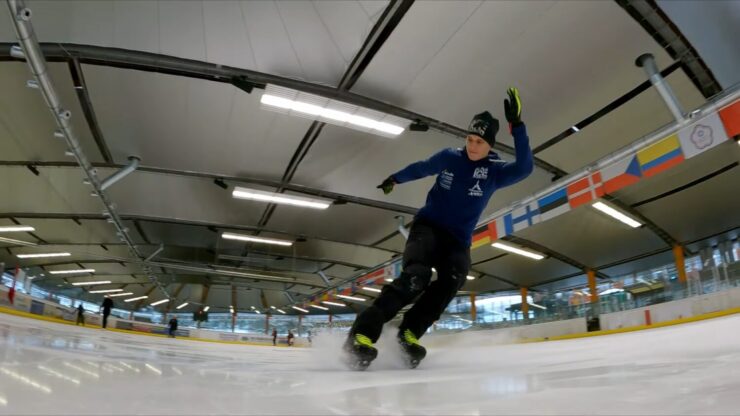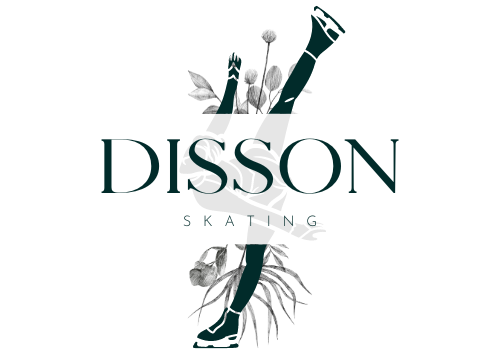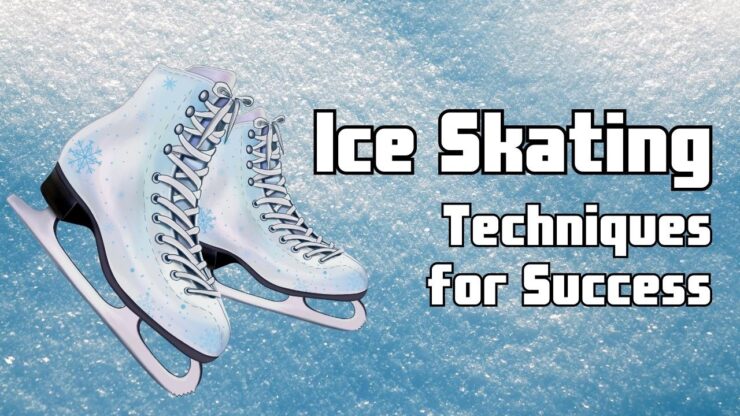Picture the feeling of cool air on your face, the rhythmic swoosh of blades on ice, and the world gliding by in a mesmerizing dance of grace and speed. Welcome to the exhilarating world of ice skating! This blog post serves as your comprehensive guide to Ice Skating Techniques: Tips to Improve Your Skills and Master the Rink.
From understanding the fundamental techniques to mastering the most advanced tricks, this blog will offer insights that cater to every level. So, let’s lace up our skates and glide towards the first lesson – mastering the basics.
Basic Ice Skating Techniques
Think of learning ice skating like building a house. The foundation must be robust to support the structures that will follow, making it essential to first master the basics. These basic techniques involve maintaining balance, adopting the right posture, and mastering the art of gliding. Finding balance on the ice is the first step. Remember to keep your feet shoulder-width apart and slightly bend your knees.
Maintain a relaxed and upright posture, allowing for better control and reducing the risk of falls. When it comes to gliding, the key is in your weight transfer. Practice shifting your weight from one foot to another, gradually allowing yourself to move across the ice. It’s okay if you stumble; remember, every fall brings you one step closer to effortless gliding!
Perfecting Turns and Transitions
Once you’ve mastered gliding, it’s time to take on turns and transitions. These are essential for creating smooth, elegant skating routines and are crucial in both figure skating and ice hockey. Forward crossovers are a popular turn technique. Start by pushing off with the outside edge of one skate, crossing it over the other. Backward crossovers follow the same pattern but involve gliding backward.
While these may be tricky initially, practice will make them second nature. The golden rule of perfecting turns is to keep your body weight centered and your movements fluid. Visualize each turn as a dance move – the more gracefully you execute it, the more effortless it looks.
Mastering Edges and Stops
Next, we’ll dive into understanding edges and stops. In ice skating, the inside and outside edges of your blades are your primary points of control. Edge control is about learning to shift your weight to manipulate these edges, dictating your speed, direction, and balance. To practice, try exercises that involve shifting your weight from the inside to the outside edge and vice versa. With time, you’ll gain better control over your edges, improving your overall skating proficiency.
Understanding stopping techniques is equally important. Snowplow stop and hockey stops are two common methods. A snowplow stop involves pointing your toes inwards and pushing out your heels, while a hockey stop requires a quick pivot to the side. Remember, a controlled stop is just as impressive as a fast glide!
Developing Speed and Power
Speed and power transform a casual skater into a compelling performer. Developing these requires strengthening your lower body and improving your weight transfer and arm movements. Leg-strengthening exercises, like squats and lunges, can improve your speed and power. While skating, remember to maintain a steady rhythm of pushing and gliding. Your arms should mirror this rhythm, swinging back and forth in time with your strides.
Pro tip: Practice skating in long, straight lines to improve your speed, and focus on perfecting your technique before you try to increase your pace.
Jumping and Spinning Techniques
Imagine the thrill of flying through the air or spinning like a top on the ice! Jumping and spinning are the most exhilarating aspects of ice skating, often forming the climax of any skating performance. Jumps come in various types, from the simple toe loop to the complex axle.
Each jump involves a particular takeoff and landing technique. Similarly, spins range from the basic upright spin to the challenging camel spin, each requiring distinct control and balance. These moves require practice but start slow and stay safe. And remember, every leap and spin should be an expression of joy, so don’t forget to wear your biggest smile!
Choreography and Performance Skills
Ice skating is not just a physical sport; it’s a form of art. An excellent skater tells a story with each performance, moving with the rhythm of the music and creating a visual spectacle on the ice. When creating your skating routine, consider the beats and rhythm of your chosen music. Each stroke, glide, spin, and jump should be in harmony with the melody. Remember, your performance should captivate the audience, evoking emotions and leaving them in awe of your skills.
Off-Ice Training and Conditioning
What you do off the ice is just as important as your practice on it. Off-ice training helps enhance balance, flexibility, and strength, significantly impacting your performance on the ice. Include activities like yoga, ballet, or Pilates in your training routine. These can improve your flexibility and strength, making your movements on the ice more fluid and controlled. Additionally, strength training and aerobic exercises can boost your stamina, letting you maintain high-energy performances for longer periods.
Injury Prevention and Safety Tips
It can be a risky sport, so it’s crucial to ensure your safety. Start with a proper warm-up routine to prepare your muscles for the rigorous activity ahead. Stretching exercises can improve your flexibility and help prevent injuries. Equally important is wearing appropriate protective gear. Helmets, knee pads, and elbow pads can safeguard you against potential falls and collisions. Remember, safety should always be your top priority on the ice!
Overcoming Common Challenges
Fear of falling, lack of confidence, or feeling overwhelmed by complex moves – every skater encounters these challenges. But don’t let these hurdles deter you. Visualization and positive self-talk can be powerful tools to overcome fear and boost confidence. Visualize yourself executing the perfect glide, turn, or jump. Speak words of encouragement to yourself, and don’t forget to celebrate your progress, however small.
Seeking Professional Coaching and Feedback

A professional coach can provide invaluable guidance and feedback, helping you to refine your techniques and push your limits. Regular lessons and practice sessions can ensure consistent improvement and help you stay motivated. When choosing a coach, look for someone with a deep understanding of ice skating, excellent teaching skills, and a personality that resonates with you. After all, the journey of mastering it is not just about the destination; it’s also about enjoying the ride!
FAQs
What safety measures should I take when ice skating?
Start with a proper warm-up and stretching routine to prepare your muscles for skating. Wear appropriate protective gear, including a helmet, knee pads, and elbow pads. Always skate within your ability level and abide by the rink’s rules.
How can I overcome the fear of falling while skating?
Practice safe falling and getting up techniques to build confidence. Visualization and positive self-talk can also be powerful tools to overcome fear. Remember, falling is a part of learning in ice skating.
What are the benefits of having a professional ice skating coach?
A professional coach can provide valuable feedback and guidance to refine your techniques. They can help structure your training, set realistic goals, and keep you motivated. Regular lessons with a coach can ensure consistent improvement.
How do I find the right ice skating coach?

Look for a coach with solid ice skating knowledge, excellent teaching skills, and a personality that resonates with you. You can find coaches through local skating clubs, rinks, or online platforms.
What role does music play in ice skating?
Music is an integral part of ice skating performances. Skaters must move in harmony with the music, with each stroke, glide, spin, and jump matching the melody and rhythm. The right music selection can enhance the emotional impact of a performance.
What should I do if I want to take my ice skating skills to a competitive level?
If you wish to compete, consider getting a professional coach who can provide structured training and guide you through competitions. It’s also crucial to follow a rigorous off-ice conditioning program to improve your strength, flexibility, and endurance. Above all, dedication, patience, and consistent practice are key.
Conclusion
Whether you’re a beginner or an advanced skater, there’s always room for improvement. Mastering the rink is a journey of continuous learning, requiring patience, dedication, and practice. By implementing the tips and techniques discussed in this blog, you can transform your ice skating abilities and truly command the rink. So, what are you waiting for? Lace up your skates and let the magic begin!

